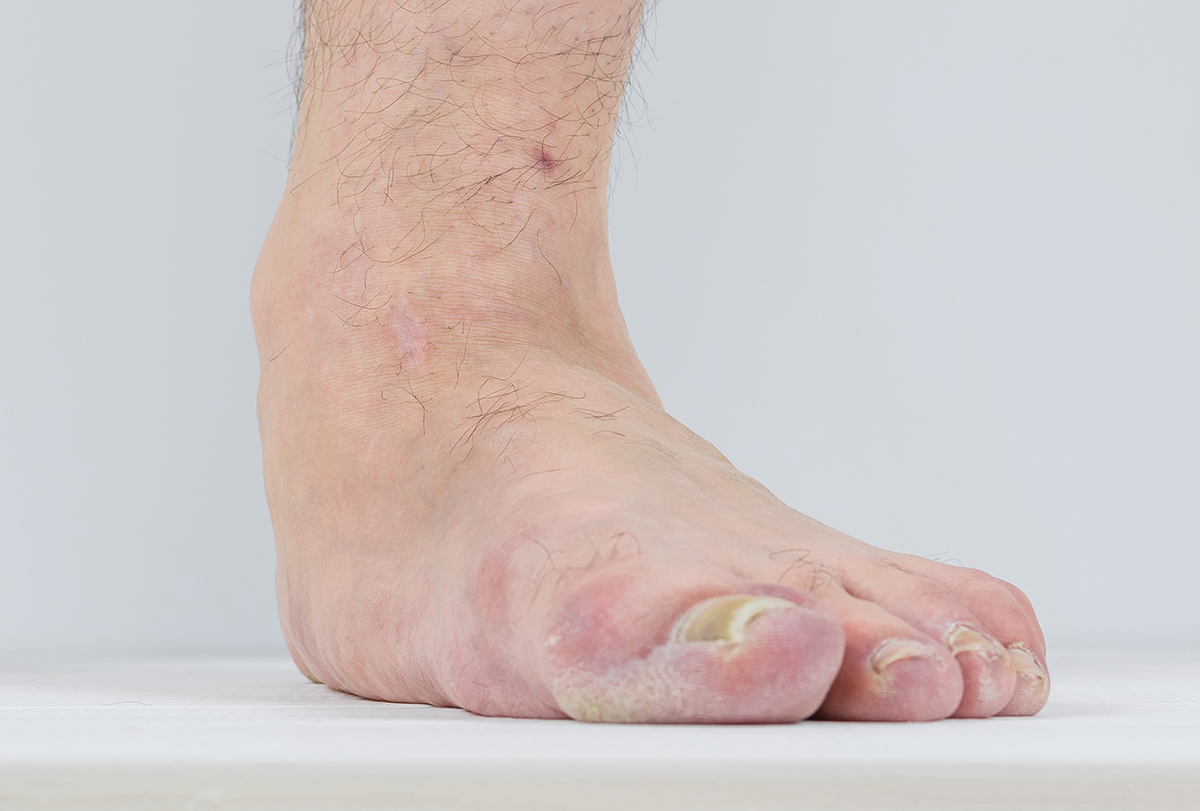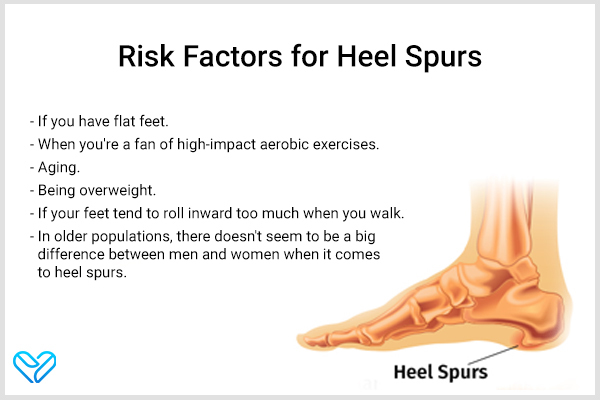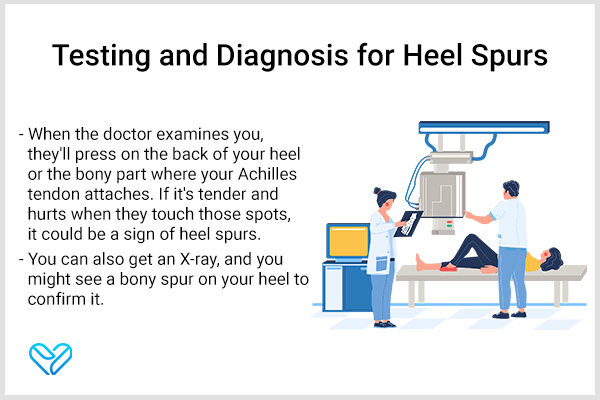In this article:
Have you ever noticed a little bony knob at the bottom of your heel? It’s called a heel spur or a calcaneal spur. It’s a tiny extra bone that grows where your heel bone connects to your foot.

Heel spurs might cause a little pain or discomfort, but they’re not dangerous, and most people can manage their symptoms with some simple treatments. (1)
It’s not exactly known why they emerge, but some experts say that heel spurs may develop when calcium deposits accumulate on the underside of the heel bone over several months, causing a bony protrusion.
Sometimes, the condition appears when your foot is dealing with other issues, such as plantar fasciitis, wherein the band of tissue (plantar fascia) under your foot becomes inflamed and causes pain. (2)(3)
Types of Heel Spurs
Heel spurs are little triangular projections made of fibrocartilage. They can vary in size and can be found either on the top (dorsal) or bottom (plantar) surface of the heel bone.
The heel bone, or calcaneum, is not only the largest and strongest bone in your foot, but it’s also the first one to develop. (3)
Note: Do you know there are 26 major bones in the foot?
There are two types of calcaneal spurs:
- Type A spurs are located above the point where the plantar fascia attaches to the heel bone.
- Type B spurs extend forward from that attachment point within the foot.
Note: On average, type A spurs are longer than type B spurs. Patients with type B spurs often report experiencing more severe pain.
Causes of Heel Spurs
Here are some common causes of heel spurs.
1. Gout
In gout, the joints are invaded by tiny crystals that cause a lot of pain. These crystals, made of uric acid, can also sneak into soft tissues such as the Achilles tendon. When they do, they can lead to the formation of heel spurs. (3)(4)
2. Obesity
Carrying extra pounds can put a lot of pressure on your feet, especially your heels. This extra pressure can contribute to the development of heel spurs. (3)
3. Plantar fasciitis
The plantar fascia, the tight band of tissue at the bottom of your foot, can sometimes become irritated and inflamed. When this happens, heel spurs can form. (3)(4)
4. Arthritis
If you have conditions such as rheumatoid arthritis or ankylosing spondylitis, you’re more likely to have heel spurs. These conditions can cause erosion and damage to your joints, including the heels, leading to heel spurs. (3)(4)
Risk Factors of Heel Spurs

Several factors may contribute to the development of heel spurs:
- If you have flat feet (also called pes planus), you’re more likely to experience heel spurs and their annoying pain. (3)
- High-impact aerobic exercises, such as jumping jacks and running on hard surfaces, might contribute to the development of “calcaneal spur syndrome.” (4)
- As you get older, the chances of developing heel spurs increase. One study found that about 55% of people over 62 years old had heel spurs. (5)
- Being overweight increases the risk of heel spurs. In one study, almost half of the people with heel spurs were overweight.
- If your feet tend to roll inward too much when you walk (pronation), you may develop heel spurs. (5)
- In older populations, there doesn’t seem to be a big difference between men and women when it comes to heel spurs. But in younger folks, ladies seem to have a higher incidence, maybe because women wear high heels that mess with foot biomechanics. (5)
Symptoms of Heel Spurs
The main symptom of heel spurs is heel pain, which is technically called talalgia. You may feel a steady ache or sharp pain in your heel. (3)
The size, shape, and even the squeezing of the nerves around the spur can all contribute to the pain. Some factors can also increase the likelihood of experiencing heel pain with spurs. These include age, higher body mass index (BMI), decreased ankle flexibility, and spending long periods on your feet. (5)
Swelling due to inflammation may also occur.
Note: Heel spurs can be found in both people with and without heel pain. So, having a spur doesn’t automatically mean you’ll be feeling the pain. (5)
Treatment for Heel Spurs
Heel spurs can be treated in the following ways: (3)
- Radiofrequency, ultrasound, and lasers can help zap away the pain and inflammation caused by heel spurs.
- Nonsteroidal anti-inflammatory drugs (NSAIDs) can help ease the discomfort associated with heel spurs.
- A little injection of steroids or local anesthesia can also provide relief.
- Extracorporeal therapy may also be used. It involves the use of shockwaves to break up the heel spur and help your foot heal.
- Modified shoes with silicone shoe inserts can provide extra cushioning and support for your feet.
Testing for and Diagnosing Heel Spurs

Your doctor can check for heel spurs in the following ways: (4)
- During a physical examination, your doctor will press on the back of your heel or the bony part where your Achilles tendon attaches. If it’s tender and hurts, heel spurs can be present.
- An X-ray can also show or confirm the presence of a bony spur on your heel.
Final Word
Heel spurs are a common cause of heel pain that can affect people of all ages and lifestyles.
It’s important to talk to your doctor if you experience persistent heel pain or any other symptoms so that you can get the right diagnosis and treatment plan for your individual needs. With the right care, heel spurs need not keep you from living an active and pain-free life.
 Continue Reading9 Ways to Heal Heel Spurs Naturally
Continue Reading9 Ways to Heal Heel Spurs Naturally
- Was this article helpful?
- YES, THANKS!NOT REALLY


